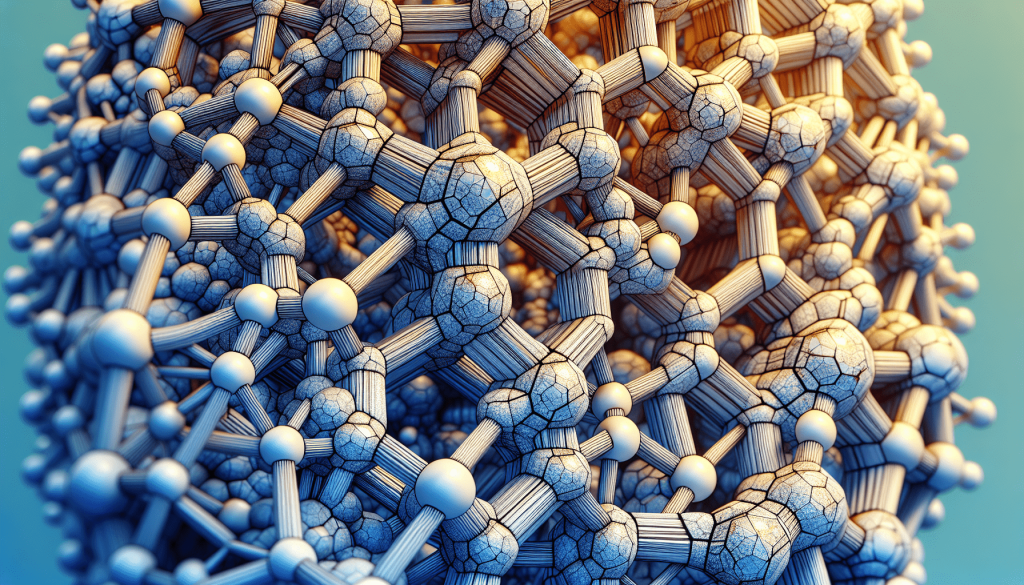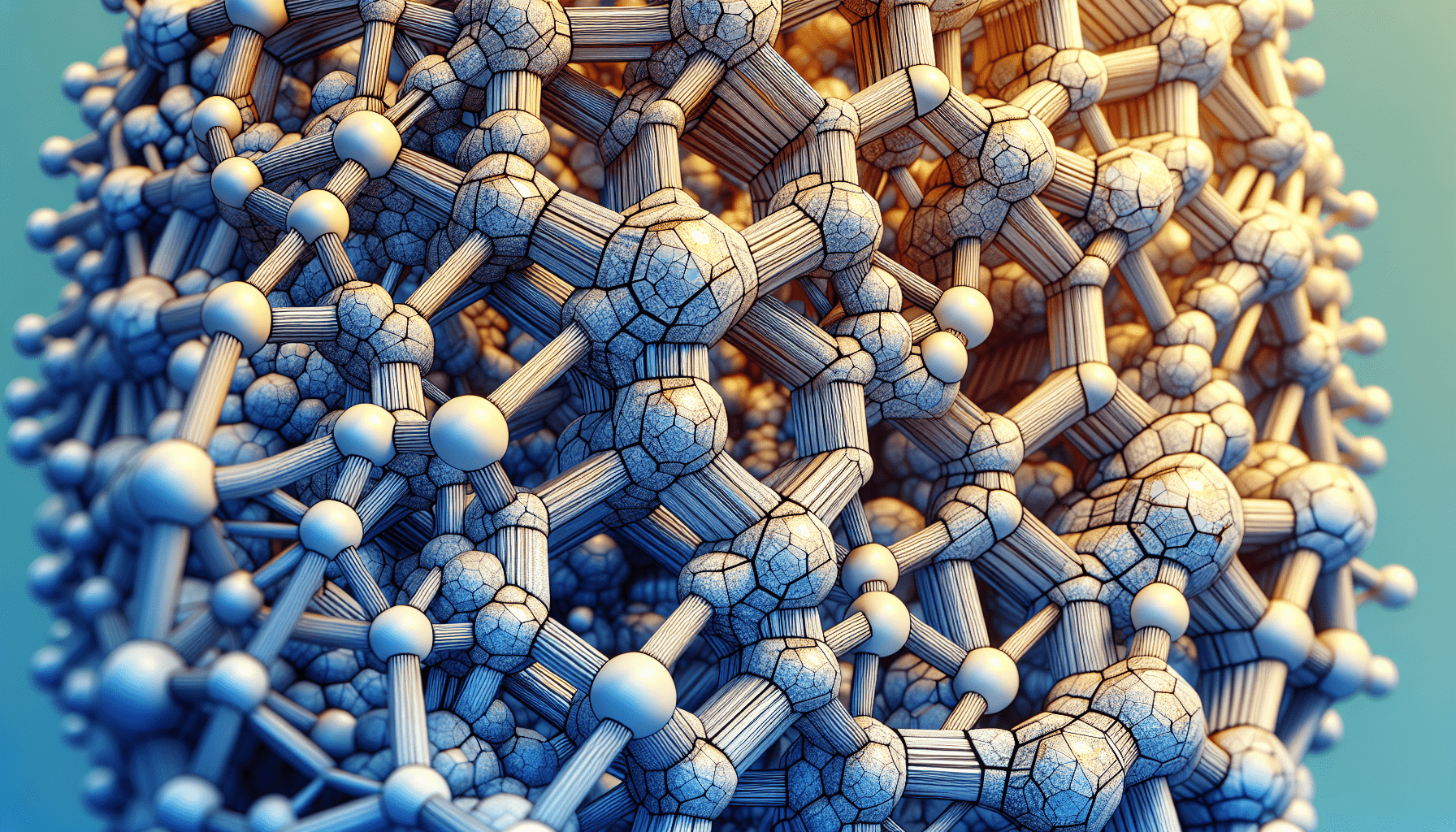Analyzing The Role Of Chemical Bonding In Mineral Properties
Imagine looking at a beautiful gemstone and wondering what gives it that mesmerizing sparkle. In the article “Analyzing The Role Of Chemical Bonding In Mineral Properties,” we will explore the fascinating world of mineral properties and the crucial role that chemical bonding plays in determining their unique characteristics. With a conversational tone, we will delve into the science behind chemical bonds and how they contribute to the color, hardness, and other defining features of minerals. Join us on this captivating journey as we unlock the secrets of chemical bonding and its impact on the dazzling realm of mineral properties.

Introduction
Chemical bonding is a fundamental concept in the field of mineralogy. Understanding the different types of chemical bonds and their effects on mineral properties is crucial for scientists to comprehend the behavior and characteristics of minerals. In this article, we will explore the various types of chemical bonds, such as ionic, covalent, metallic, hydrogen, and van der Waals forces, and their impact on mineral properties. By delving into the role of chemical bonding in mineral hardness and cleavage, we will highlight the importance of studying chemical bonding in minerals.
Types of Chemical Bonds
Ionic Bonds
Ionic bonds occur when there is a complete transfer of electrons between atoms. In this bond, one atom donates its electrons to another atom, resulting in the formation of ions. Positively charged ions, known as cations, are produced by the electron donor, while negatively charged ions, called anions, are formed by the electron acceptor. These oppositely charged ions are then strongly attracted to each other, creating a bond. Ionic bonds are fairly common in minerals, especially those composed of metals and nonmetals.
Covalent Bonds
Covalent bonds involve the sharing of electrons between atoms. In this bond, two or more atoms contribute their outer shell electrons, allowing them to form shared pairs. Covalent bonds are known for their strength, as the shared electrons keep the atoms tightly bound together. This type of bond is commonly found in minerals that consist of nonmetals and compounds that contain carbon. Covalent bonds contribute to the stability and structural integrity of minerals.
Metallic Bonds
Metallic bonds occur within metals and alloys, forming a lattice structure. Within this lattice, metal ions are surrounded by a “sea” of delocalized electrons. These electrons are not associated with any particular atom and are free to move throughout the structure. Metallic bonds are responsible for the unique properties of metals, such as high electrical and thermal conductivity, malleability, and luster.
Hydrogen Bonds
Hydrogen bonds are a type of intermolecular force rather than a true chemical bond. They occur when a hydrogen atom, bonded to an electronegative atom like nitrogen, oxygen, or fluorine, forms a weak bond with another electronegative atom nearby. Although individual hydrogen bonds are relatively weak, they can collectively have a significant impact on the overall structure and properties of a mineral. Hydrogen bonds play a crucial role in stabilizing many minerals, particularly those with layered structures like micas.
Van der Waals Forces
Van der Waals forces are weak attractive forces between molecules or atoms. They arise due to temporary fluctuations in electron distributions, causing temporary dipoles that induce attraction between neighboring molecules or atoms. Van der Waals forces play a vital role in the bonding of layered minerals, such as graphite and molybdenite. These forces are responsible for the weak interactions that allow these minerals to slide apart along distinct cleavage planes.
Role of Chemical Bonding in Mineral Hardness
The strength of chemical bonding within minerals significantly influences their hardness. Minerals with primarily ionic bonds tend to exhibit lower hardness because these bonds can be easily broken when subjected to external forces. In contrast, minerals with primarily covalent or metallic bonds are typically harder due to the strong nature of these bonds. The shared electrons in covalent bonds and the delocalized electrons in metallic bonds provide stability to the mineral structure, making them more resistant to scratches or deformation.
Furthermore, the specific type of bond present in a mineral directly affects its hardness. For example, covalent bonds are generally stronger than ionic bonds, resulting in harder minerals. Some minerals like diamond, composed entirely of carbon atoms with strong covalent bonding, are renowned for their exceptional hardness. On the other hand, minerals with weaker bonds, such as those with van der Waals forces, tend to be softer and more easily scratched.
Role of Chemical Bonding in Mineral Cleavage
Mineral cleavage refers to the way in which minerals break or split along distinct planes of weakness. The type and strength of chemical bonding within a mineral greatly influence its cleavage behavior.
The orientation of chemical bonds within a mineral plays a crucial role in determining its cleavage properties. Minerals with strong, highly directional bonds, such as those with covalent or metallic bonds, tend to exhibit poor cleavage. This is because the strong bonds resist being broken along specific planes, resulting in a lack of obvious cleavage. Conversely, minerals with weaker, less-directional bonds, like those with van der Waals forces, often display distinct cleavage due to the ease with which the bonds can be separated.
In addition to bond orientation, the strength of chemical bonding also affects mineral cleavage. Minerals with stronger bonds, such as those with predominantly covalent or metallic bonds, tend to have poorer cleavage. The strong interatomic forces make it more difficult for the mineral to break apart along specific planes, leading to inferior cleavage properties. In contrast, minerals with weaker bonds, such as those with ionic or van der Waals forces, often exhibit better cleavage due to the relatively weaker bonds that can be easily separated.

Conclusion
Chemical bonding plays a pivotal role in determining the properties and behavior of minerals. The various types of chemical bonds, including ionic, covalent, metallic, hydrogen, and van der Waals forces, have distinct effects on mineral properties such as hardness and cleavage.
The strength and type of chemical bond within a mineral directly influence its hardness, with covalent and metallic bonds generally resulting in harder minerals compared to those with predominantly ionic or weaker bonds. Cleavage properties are also influenced by bond strength and orientation, with minerals possessing strong and highly directional bonds typically showing poor cleavage, while those with weaker and less-directional bonds tend to exhibit distinct cleavage planes.
Further research in the field of mineralogy is crucial to enhance our understanding of chemical bonding in minerals. By studying the intricacies of chemical bonding, scientists can unravel the mysteries of mineral properties and contribute to a wide range of applications, including material science, geology, and even industrial processes.







